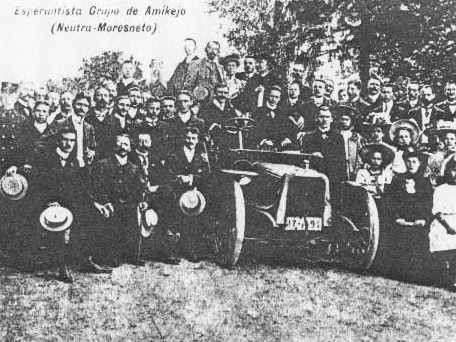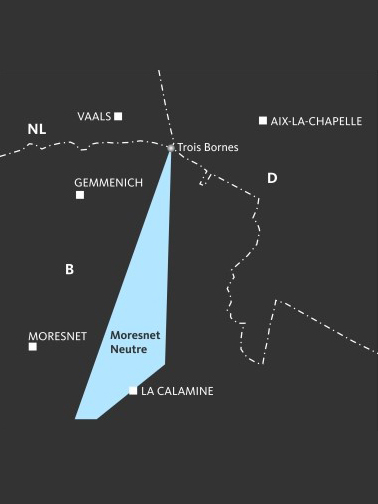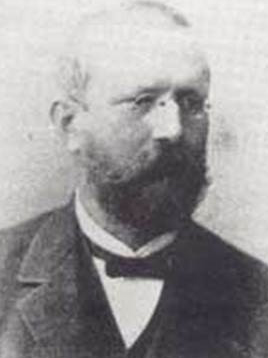Episode 4:
The Moresnet mine
Between utopia and a pioneering spirit
Where did the zinc ore actually come from?

In episode 3, I focused the story on the unrelenting expansion of the use zinc, especially in Paris, thanks to Baron Haussmann, and during the 1889 and 1900 universal exhibitions.
But where did this zinc ore actually come from? It came from the famous Altenberg mine (la Vieille Montagne mine) - which subsequently gave our company its name – located in a micro-territory nestling between the Netherlands and Prussia.
At the end of the 19th century, this neutral zone was an incubator for groundbreaking social practices and utopian attempts to create a New society.
Focus on this extraordinary, little known story.
An exceptional status, thanks to a historical incongruity
After the fall of Napoleon in 1815, the Congress of Vienna redefined the borders of Europe, especially those between Prussia and the Netherlands.
For the vicinity of Kelmis (50 km to the east of Liège), the site of a large zinc and lead mine, the two countries did not manage to reach an agreement. After multiple discussions, a special contract called “the borders contract” was signed in 1816. It was decided that the commune of Moresnet would be divided into three parts. The village of Moresnet went to the Netherlands and the territory corresponding to present-day Neu-Moresnet went to Prussia. The remaining part, around Kelmis and its zinc mine, was attributed neutral status.

This is the very territory, with its rich zinc mine and its exceptional status (governed by French law but managed by a Prussian and a Dutch commissioner!), that made history with the name Moresnet-Neutre (Neutral Moresnet).
In 1830, the Belgian revolution granted independence to the southern part of the Kingdom of the Netherlands. The independent state of Belgium annexed the village of Moresnet and benefitted from the transfer of territorial administration rights for Moresnet-Neutre.
Exceptional social action in Moresnet-Neutre
In 1816, the territory had a population of just 256 people. But the thriving activity of the mine, together with the industrial and economic development of the late 19th century, resulted in a rapid increase of the population. Although in 1830 there were already over 500 inhabitants living in the territory, in 1858 this statistic had multiplied by more than five!
With its intensive operation of the mine, the “Société des Mines et des Fonderies de la Vieille Montagne” (founded in 1837) (link épisode 1) had a certain influence over this neutral territory. Some of its directors were appointed mayors. The communal centre was housed in the company’s premises.
In hindsight, one could say that Moresnet-Neutre was like a social incubator, as it enabled “La Vieille Montagne” to make surprising progress in terms of social practices. In 1857, the company funded the building of a school, and made one of its supervisors available to the mayor as village policeman! Local inhabitants received free medical care and preferential rates on loans to build their own houses.
The archives I read led me to believe that this positive attitude was due to the fact that the directors of La Vieille Montagne wanted to keep the best staff and labourers nearby the plant for work, as well as allowing their families to prosper and develop for the common good.
For the inhabitants, other advantages were accumulating in this neutral territory. They were authorised to distil alcoholic beverages tax free for their own personal use. Until 1847, they had no military service. Goods and foodstuffs imported from neighbouring countries were duty-free. Taxes were considerably lower than the European average, while the standard of living and salaries were significantly higher than in nearby countries.

Dr Wilhelm Molly*, a humanist doctor and esperantist with “La Vieille Montagne”
No history of Moresnet-Neutre would be complete without a major chapter on the legendary Doctor Wilhelm Molly.
In 1863, this general practitioner born in Wetzlar, Germany, first moved to Neu-Moresnet to open a medical practice. He soon made a name for himself among the local population, as he treated his patients at very affordable prices. When he managed to get the better of a threatening cholera epidemic, he became more popular than ever and was appointed company doctor with “La Vieille Montagne”. He then moved to the neutral territory.
A humanist and excellent practitioner, Dr. Wilhelm Molly had ideas for the independence of the territory he lived in. He founded a postal service and, with his friends, illegally issued postage stamps! In 1906, he contacted Gustave Roy, a professor in France and Chairperson of the Parisian Chamber of Commerce and Industry.
Their objective: to create AMIKEJO (= place of great friendship), which would be the first ever esperantist free state, in Moresnet-Neutre! In 1908, they organised a propaganda meeting in the Carabineers’ hall. The entire population attended to hear the speech in favour of the establishment of a new State. On this occasion, “La Vieille Montagne” brass band even played the “Amikejo” march, composed as the future national anthem!
The neutral territory also acquired a flag, with three horizontal stripes in black, white and blue – which were probably inspired by the coat of arms of “La Vieille- Montagne”. After this meeting, several international newspapers reported on the credibility of the creation of an esperantist state in Moresnet-Neutre! The fourth esperantist congress in Dresden even decided to give preference to Moresnet-Neutre over the Hague (Netherlands) for the world Esperanto centre!
But the neutral territory’s raison d´être had already disappeared in 1895, with the end of operations in the zinc mine. Consequently, Prussia attempted on several occasions to cancel the territory’s “temporary” status. As negotiations with the Belgians were getting nowhere, the Prussians decided to use force, particularly with acts of sabotage! And so in 1900, the electricity supply and telephone lines were cut. In August 1914, the start of the First World War and the arrival of German troops in the territory marked the end of Moresnet-Neutre’s neutrality.
In 1919, the Treaty of Versailles definitively cancelled the territory’s independence.
What remains today of this zone that made history?
Of the 60 stake posts marking the border of the neutral territory, approximately fifty remain in their initial position to this day, as though the neutral territory still existed!
The Vallée de la Gueule Museum is entirely dedicated to this incredible human and industrial adventure.
In 2015, the municipality of Kelmis-La Calamine decided to purchase the former “Vieille Montagne” director’s house – a geometric art nouveau style building dating back to 1910, which still has its original zinc roof – with the intention of moving the museum there.
At VMZINC we are proud to be participating in this symbolic project, which allows us to go back to our roots with dignity.
*1838- 1919